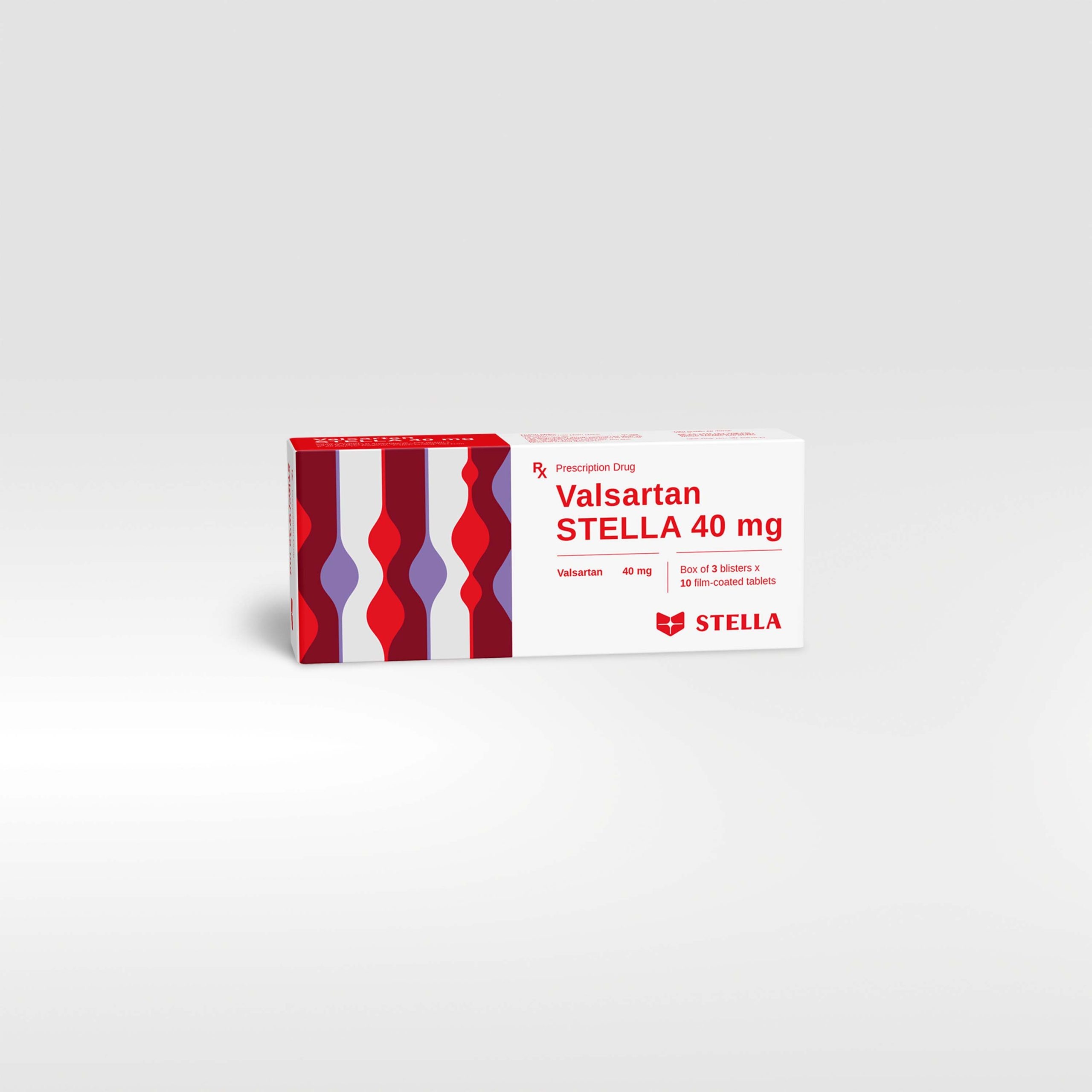Valsartan STELLA 40 mg Rx
Valsartan is an orally active, potent, and specific angiotensin II receptor antagonist. It acts selectively on the AT1 receptor subtype, which is responsible for the known actions of angiotensin II. The increased plasma levels of angiotensin II following AT1 receptor blockade with valsartan may stimulate the unblocked AT2 receptor, which appears to counterbalance the effect of the AT1 receptor.
Valsartan does not inhibit angiotensin converting enzyme (ACE) which converts angiotensin I to angiotensin II and degrades bradykinin.
| Pack size | Box of 30 tablets |
| Shelf-life | 24 months |
| Composition | Valsartan |
| Dosage forms and strengths | Film-coated tablet: 40 mg |















